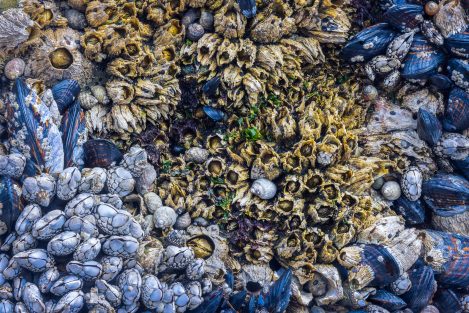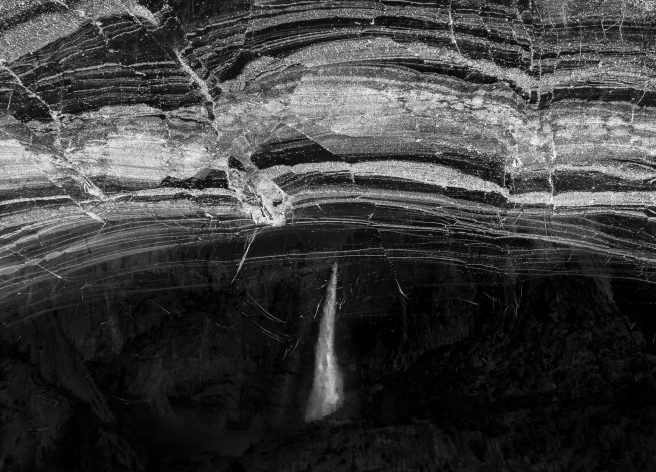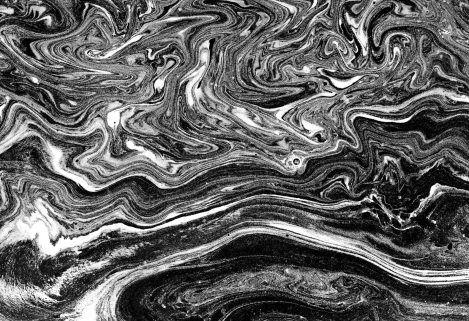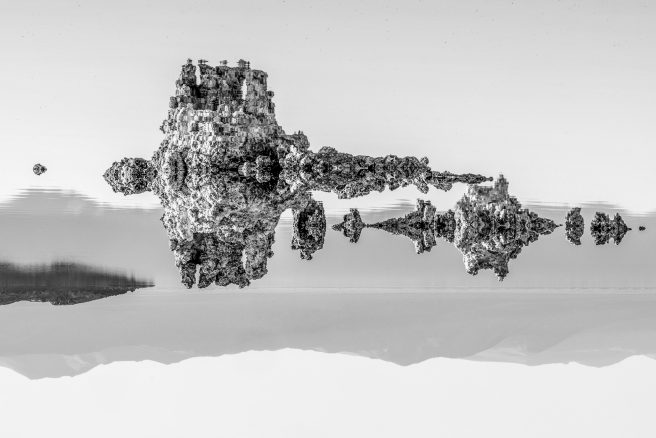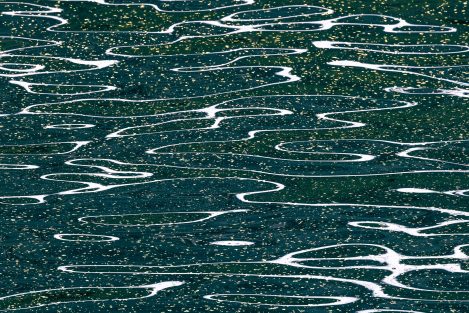Neuroplasticity, the ability of the brain to restructure

Alberto Rodriguez-Garcia
Originally from Spain, Alberto is a nature photographer and writer based in San Francisco. He has lived in California for most of his life and spends much of his free time exploring the varied landscapes of the American West. In his photography as well as writing, Alberto aims to communicate, as authentically and honestly as possible, the innermost experiences, emotions, and ideas he encounters.
The mind - with its sometimes harrowing complexity, contradictions, and chaos - is very much not a stable entity. This is not something we can change. When we look for it, or even when we don’t, we can feel that impermanence within and without, inside of us and in the environment we exist in. We wade through a thick, inescapable reality that is too thin to grasp but too thick to run through, only vaguely aware of the universe of changes occurring to and around us every moment.
Though it can be destabilizing to think of ourselves as untethered, malleable, and inconsistent when we are usually desperate for the opposite, the greatest powers within our minds are accessible only through the process of change. As the world changes, we change, in turn changing the world as we experience it, leading to even more internal change - and all of this happens without direction or control in the mushy core of our heads.
Neuroplasticity, the ability of the brain to restructure and change itself based on new stimuli and experiences, is a biological necessity to manage and channel the inherent chaos and unpredictability of the external world towards greater potential for surviving, reproducing, and, eventually, dying.
As nature photographers, it’s difficult to accept that everything that we experience - those elevated emotions of awe, inspiration, wonder, mystery, and joy that can appear while exploring beautiful natural places - are generated illusions of the brain without reference to a physical reality outside of us (what internalism argues); we tend to experience things as an externalist might: our minds and bodies creating reality and meaning through a participation with the environment.
Within externalism, there is a theoretical progression from passive to active participation. A passive externalist recognizes that the external environment affects the contents of consciousness, that we are influenced by the environment. The active externalist goes one step further and says that the external environment can actually be part of our minds. Andy Clark and David Chalmers coined this active externalism in a landmark paper called “The Extended Mind”, putting forward a hypothesis that the realm of the mind can extend from the brain and body to the external environment, that the mind can be thought of as being physically manifest in the outside world.
Calculators, maps, watches, even cameras, can be part of our minds because we use them as if they were part of it, reliably, intuitively, and constantly, engaging with them to create an ”extended system, a coupling of biological organism and external resource,” according to the now-famous paper. Our major cognitive system, the brain, expands outward and adds additional tools and processes to its repertoire, allowing us to reshape our minds and have new (or sometimes replicated) mental experiences via the environment that we interact with. A coupled system is created through a reliable and reproducible process that, over time, becomes so intuitive that it is effectively a cognitive process in and of itself. According to the experts, the requirements for this are: functional equivalence: the external resource must function in a similar way to internal cognitive processes and should be directly involved in the process; accessibility and availability: the external resource must be readily accessible and available to the mind when needed; reliability: the process must be repeatable and the output trusted as being accurate or representational; intentionality: there must be an intention to use the external resource as a part of the cognitive process.
As the authors explain, “If, as we confront some task, a part of the world functions as a process which, were it done in the head, we would have no hesitation in recognizing as part of the cognitive process, then that part of the world is (so we claim) part of the cognitive process.” In other words, if we replace or add a cognitive process (e.g.. doing multiplication) through the environment (a calculator) that we could perform ourselves (assuming one could, which for me might be a stretch), then the cognitive process of multiplication now lives partially outside of the brain (in this case, the calculator).
The photographer’s extended mind means that our photographic resources - the camera, lenses, tripod, etc - can transcend, through an investment in the combination of time, conscious effort, and practice, from a mechanical tool to, in the literal sense of the words, a part of our minds, stretching into the environment through our (camera) bodies. How does this happen, and when do we know if our minds have extended into our cameras? And most importantly, why does this matter at all?
Going back to the four requirements of proper extension (functional equivalence, accessibility/availability, reliability, and intentionality), we can see how this translates to the experience of making images. The camera is performing a function that the human eye is known for: directing and processing light; if you are like me, the camera at times is too available/accessible; and modern technology has made cameras exceedingly reliable too; which means that the main thing we need to focus on is our intentions in using our cameras. There is no wrong intention, generally speaking - the important thing is for there to be some intention at all. To intend to use a camera as a part of our mind is where a mechanical process has the potential to transform into a creative one, depending on what parts of your mind you are extending. Whether we are attempting to record the external (“capturing a moment”) or we are attempting to record the internal (“expressive photography”) does not determine the extent or success of the mind’s extension, but only demonstrates what is being extended from the brain to the camera. It is important to be aware of our cognitive objectives. Are we using the camera to replicate sight, or to be able to have a vague re-experiencing of this moment, or to translate meaning from the things that we see? For most of us, the answer may include all of the above. For the artist, the priority should be the latter - the observation and translation of internal meaning from external experiences.
Regardless of intent, the camera, like any other human tool, reaches its maximum potential for action when a user can wield it with the charm of intuition, when the four requirements merge.
Over time as one becomes more familiar with the intimate nuances of the not-you and the physical-intellectual-emotional connection inherent in any relationship, the internal struggle and fight to make sense of it all slowly erodes, and so do the doubts and confusions and expectations and frustrations that we sub/conciously harbor inside of us. The result is that the not-you ends up becoming a part of you, in a sense. It is part of your nature because it does not require you to deviate from what your body and mind know to do; directions are unnecessary. Of course this all sounds exceptionally straightforward, but as anyone who has invested in themselves to this degree knows: it’s not easy, and it’s a lifelong pursuit. And the harsh truth is that no matter how patient, persistent, and open-minded you are, how much you practice and invest, there is an asymptotic illusion called perfection that teases and motivates. “Practice makes perfect,” they say, wholly deceptively; what it does make is intuition, and that is good enough.
Just like how we don’t have to think about how to breathe, how to blink, how to swallow, how to laugh, how to digest, how to cry, or how to walk, we should not have to think about which buttons do what or what will happen if we press the shutter. This is how our biological system becomes coupled with our camera: we repeat certain motions - this dial controls shutter speed, this one aperture, that one ISO; and this button means I make a (usually) mediocre image - with predictable results. At a certain point, we know not only what the dials do and how to use them, but we don’t need to expend any resources to remember these facts. It all starts to become second-nature, and then first-nature. Our mind is in the process of entering the camera, but is also quietly busy, as it always is, changing itself.
The reason the dials are so familiar that we don’t have to consider them anymore goes back to our good friend, neuroplasticity - all of our experiences, whether familiar or completely foreign, pass like a rushing of water over the contours of our brains, creating and destroying rivulets and channels that determine much more than we dare to admit, directing thoughts and behavior and the mind-shatteringly diverse set of actions required to maintain a functional, living body. This is how we become who we are. Whether an experience elicits a misty drizzle or a downpour over the landscape of the mind is complex and, for now, mostly unknowable; but whether a channel is created by one intense experience or by the aid of practice is secondary to the consequence of the changes themselves. And suddenly, intuition is born and the channels and rivulets of a particular set of actions become so deep that information flows uninterrupted from our cells to our environment.
Beautiful and helpful though it is to know that we have the capacity for change built into us, the flip side of this reality is that some patterns, once they have been set by an endless mist or by a downpour, can be stubborn. For an artist, this is dangerous territory: the frightening and despised land of conformity, of habitual thinking, of stagnation. This is why practice, though it is critical to reach intuition, should be intentional to some degree, as it can be easy to practice patterns of behavior or thought that are less than useful or that are counterintuitive to one’s own goals. The point is, again, that we should be aware of what it is we want to expand into, our cognitive objectives, and that the process of intuition is natural but, thankfully, malleable. We can, it turns out, become what we want to be.
The question then becomes: what do we want to be?
Another startling revelation emerges after enough investment in the practice of photography: our minds are being shaped by the camera in return. We begin to see the world differently, like we are somehow part camera, our mind projecting images as though the eyes have adjustable shutter speeds and apertures of their own, influencing what we notice in the external world and what it means to us; a coupled system, a reciprocal influencing, an extension of ourselves. Eventually it starts to feel like we aren’t using a camera at all, like the camera is a physical extension of the hand, mind, and eyes. And through composing with the camera, which is now just a mechanical addition to the body, our minds can extend further still, seeping out like smoke towards the world: moving towards the trees, rocks, grass, water, leaves, mountains, and more, simultaneously expanding and destroying the self through the construction of meaning, revealing what can only be found inside each of us. We become closer to everything that isn’t us by stretching out as far as we can go, further, maybe, than we thought possible.
Through the creation of meaning - through our images - we can extend our mind a little further, to other minds. We offer, if accepted, a peek into our minds, narrowing the gap of understanding between fleshy universes, both minds extending toward each other. That is part of what makes art, and photography, so valuable: the ability to expand yourself just that little bit further, to be seen a little bit more clearly, in return seeing yourself more clearly too.
Again the question tantalizes and begs: what will we see when we become more clear?



